Last updated: January 27, 2022
Article
Dare to Imagine: Dr. Donna J. Shaver
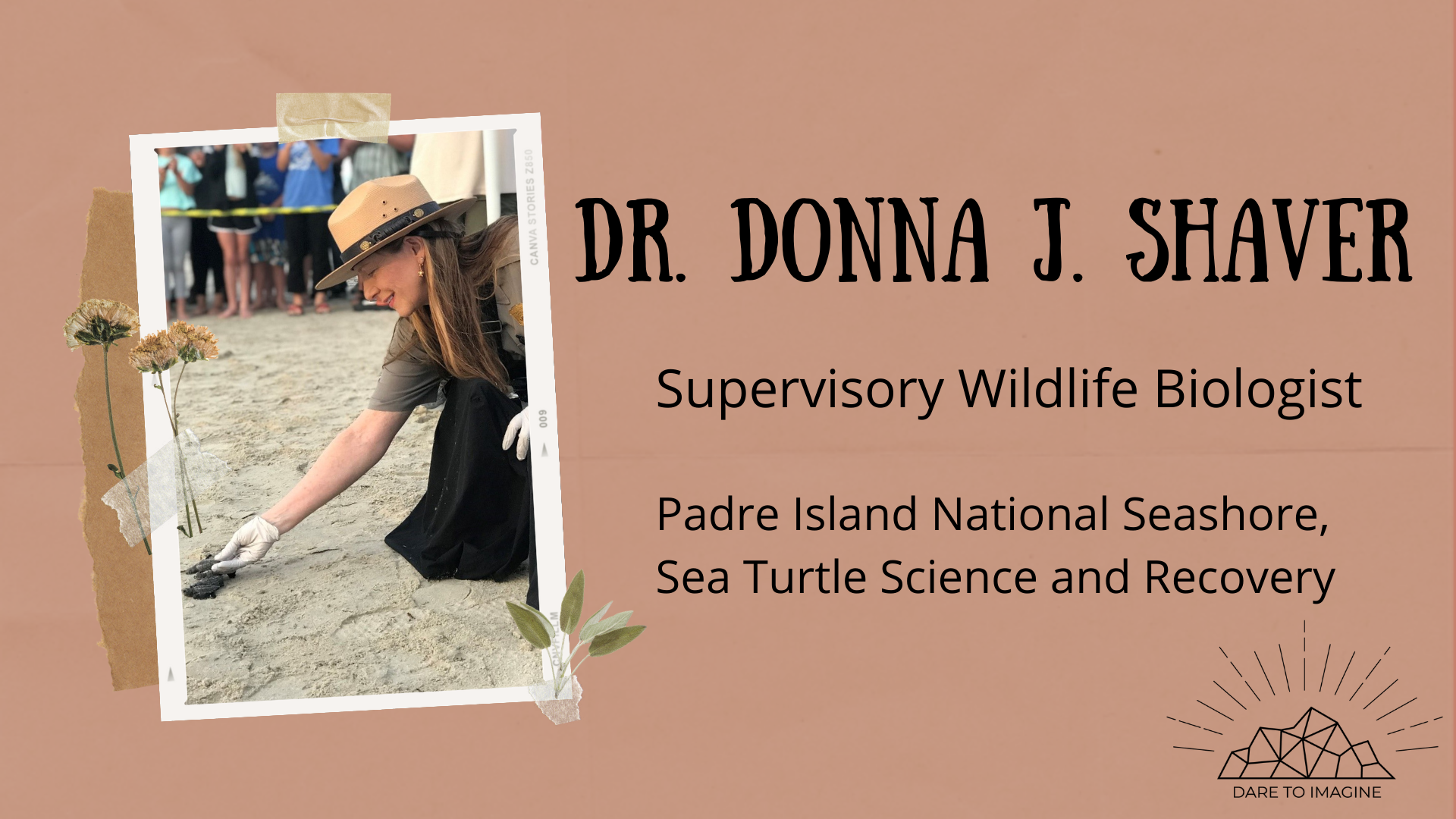
Women lifting other Women
I first learned about Dr. Shaver's extraordinary work when she contacted the Women’s Employee Resource Group (W-ERG) about being a finalist for the 2020 Samuel J. Heyman Service to America Awards or "Sammies.” Donna, who works at Padre Island National Seashore, has dedicated her career with the National Park Service to sea turtle conservation. This link to her nomination for the Sammies give a detailed of her accomplishments in sea turtle conservation.
Dr. Shaver's work with sea turtles, particularly Kemp's Ridley Sea Turtle, has played a key role in sea turtle conservation in the Gulf of Mexico. Colleagues credit her work over the last 40 years as playing a key role in preventing the extinction of Kemp's Ridley sea turtles.
-Megan O’Malley, Superintendent at Martin Van Buren National Historic
Site
Dr. Shaver, what project work would you like to highlight?
My largest and most long-term effort has been the Kemp’s Ridley Sea Turtle Restoration and Enhancement Project at Padre Island National Seashore, which I have dedicated my life to for over 40 years.
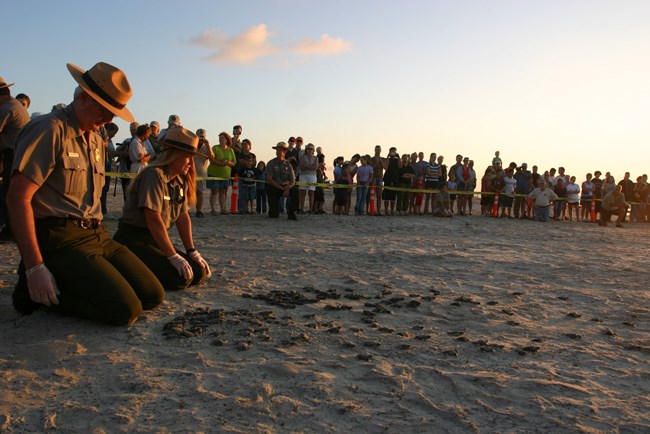
Will you tell us a little about that project?
The Bi-National Kemp’s Ridley Sea Turtle Restoration and Enhancement Program is a multi-agency project that the National Park Service began in the 1970s to help save this species from extinction. The program includes an effort to form a secondary nesting colony of Kemp’s ridley sea turtles at Padre Island as a safeguard against extinction, in the event of an environmental or a political catastrophe in Mexico. In this effort, my division and I collaborate with a bi-national team that includes the U.S. Fish and Wildlife Service, National Oceanic and Atmospheric Administration, Texas Parks and Wildlife Department, University of Alabama at Birmingham, and various agencies in Mexico. We also provide training and leadership instruction to many of these same agencies and collaborate with them and other local, state, and federal agencies, universities, aquariums, and NGOs for programs specific to Texas. Each year I present the results for Texas Kemp’s ridley nesting and stranding activity, and associated research that my lab conducts to the bi-national team for discussion and planning. The information collected by my program, in conjunction with data collected by our partners, is used to determine factors such as threats, population trends, and programmatic changes to aid in preparation for the upcoming year at the nesting beaches in Mexico and Texas to maximize conservation benefit and species recovery.
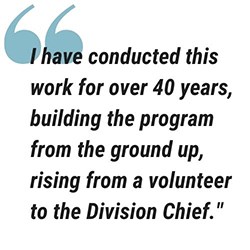
Having effective communication and relations with these partners is critical. Also, because I have conducted this work for over 40 years, building the program from the ground up, rising from a volunteer to the Division Chief, there have been many changes in organizations and personnel over time. It is vital to understand changes in dynamics of partnership over time, and what makes an effective partnership with a variety of generations. Although I have been successful in my field, I need to remain relevant and always seek to improve the effectiveness of our vital partnering work.
On the ground at Padre Island, I lead my team following three primary goals: scientific research, conservation, and education. With the help of my team, I use the information gained from our various Kemp’s ridley research and monitoring projects to lead conservation actions that save Kemp’s ridleys and other sea turtles, apply this information at Padre Island, and promote outreach opportunities and education through social media and other sources. This work has led to immense support for the program, nationally and internationally, and promising signs of recovery for Kemp’s ridleys through decades of effort by me, my team, and our partners, but there is still substantial work to be done. Specifically, the species is still of significant conservation concern with recent, unexpected declines in annual nesting numbers after years of increase, both at Padre Island and in Mexico. The cause of these declines is still unknown and without continued conservation and protection efforts, we remain at risk of losing this species for future generations.
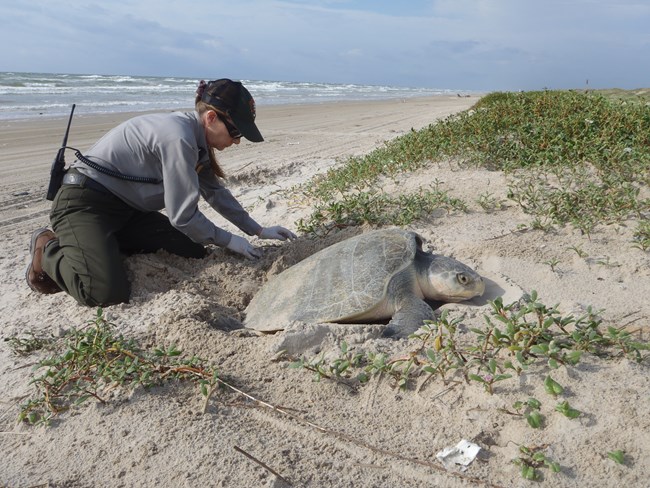
What was your path like? How did you get to where you are now?
I started my professional career in science as an intern for the Student Conservation Association at Padre Island National Seashore during the summer of 1980. From that experience, I fell in love with sea turtles and came back to Padre Island to work with the National Park Service from 1981–1993, where I championed and led the park’s sea turtle conservation efforts. In 1993, I became the Director of the U.S. Geological Survey Padre Island Field Research Station but remained a scientific advisor to PAIS on sea turtles. In 2003 I returned to the National Park Service at Padre Island, where I have been Chief of the Division of Sea Turtle Science and Recovery ever since. I received my Bachelor of Science in Wildlife Biology (1981) from Cornell University, Master of Science in Biology (1984) from Texas A&I University, and Doctor of Philosophy (2000) in Zoology from Texas A&M University in College Station, Texas. In my current role, I oversee a variety of sea turtle research and conservation projects conducted in Texas. I am the Texas Coordinator of the Sea Turtle Stranding and Salvage Network and a member of the Kemp’s Ridley Sea Turtle Working Group and The International Union for Conservation of Nature (IUCN) Species Survival Committee Marine Turtle Specialist Group. I served as a member of the Kemp’s Ridley Sea Turtle Recovery Team (2002–2011) and Board of Directors for the International Sea Turtle Society (2003–2008). I also collaborate with other researchers in the U.S. and Mexico and provide training and leadership to hundreds of biologists and volunteers working with sea turtles in Texas.
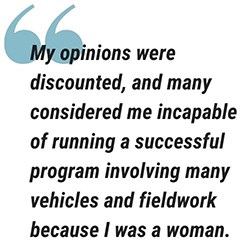
What was the hardest part about getting where you are? How did you overcome it?
The hardest part for me has been being a woman in this field. I had only one female professor throughout my graduate and undergraduate educations. I faced sexual harassment as a young woman and then sexual discrimination as I got older. Being the only woman leading sea turtle research and conservation in Texas was not easy. Frequently, men assisting me with my work were assumed to be the research lead, even though I was the principal investigator on the projects. In professional settings, I was addressed by my first name, while all my male counterparts were addressed as “Doctor”, even though I was the one with a Ph.D. My opinions were discounted, and many considered me incapable of running a successful program involving many vehicles and fieldwork because I was a woman.
I overcame these challenges through persistence and hard work. I kept working hard to prove myself to my male peers and colleagues. I tried to diplomatically speak to others when they neglected to treat me equally and that they should stop treating me the way they did. I was lucky to work with other strong female colleagues who encouraged me to rise above it and stay strong on my path. Over the years, I have worked with a great team of employees to complete our mission and create an environment where everyone is treated with dignity and respect, without discrimination based upon gender, age, race, marital status, disability, or any other factors.
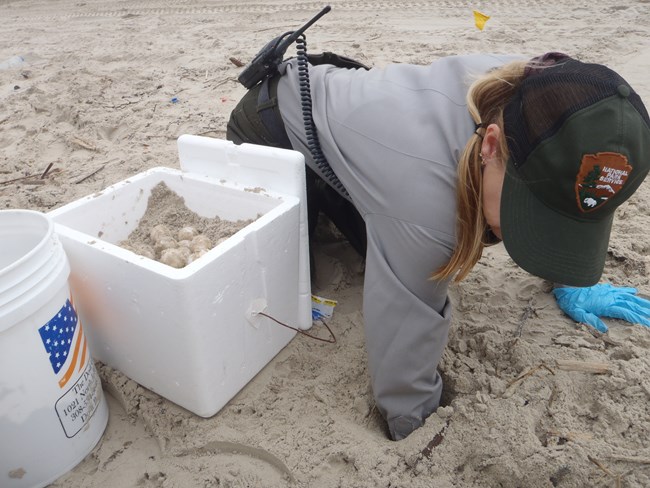
What are you most proud of?
Three things immediately come to mind. The first occurred on May 29, 1996, what I consider to be the most important day of my scientific career. After a decade of monitoring nesting Kemp’s ridleys at the National Seashore and surrounding areas for signs of success of the program and many people recommending I move on, I got a call over the radio from one of my staff members that she had found a nesting turtle on the beach. With the aid of one of our law enforcement officers, I quickly travelled to the site, excitement in the air. As the two of us arrived, the turtle was starting to cover her nest. I quickly went to the turtle and as I brushed sand off her shell, I saw a large white spot on her back; a living tag used to identify individuals hatched from the bi-national program. The importance of this was incredible, as it was the first confirmed returnee from our program to save the species and a turtle that I had hatched at the Seashore ten years earlier, in 1986. That day was a tremendous success for me, the National Park Service, and the species; showing that our experimental program was paying dividends and the species was starting to show signs of recovery after so many years of work.
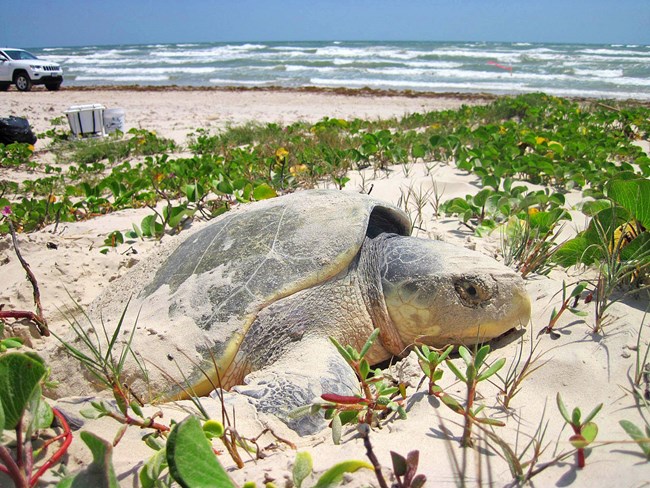
Secondly, the wealth of research information my team and I have disseminated to the scientific community on Kemp’s ridleys and the other sea turtle species found in Texas and surrounding waters. During my career, I have delivered more than 110 scientific presentations and authored or co-authored more than 100 publications and reports to promote conservation and management of sea turtles. This work includes significant contributions to assess the effects of the Deepwater Horizon oil spill on Kemp’s ridleys and the largest satellite tracking dataset in the world for the species.
Lastly, I am so proud of being able to provide educational opportunities and inspiration to the next generation of scientists. My program serves as an important training ground for biologists that are beginning their career. Many have gone on to be professors, educators, agency personnel, among countless other professions in science. Many have written to tell me how important working with a strong female role model and woman-run division was to them, and how important this work was in their development. I firmly believe that one of my most important accomplishments is speaking to people in presentations, sea turtle hatchling releases, and in media interviews. We are preserving and protecting for future generations and our work inspires people to help, give back, and contribute through volunteering, which gives them a sense of purpose.
Favorite Quote?
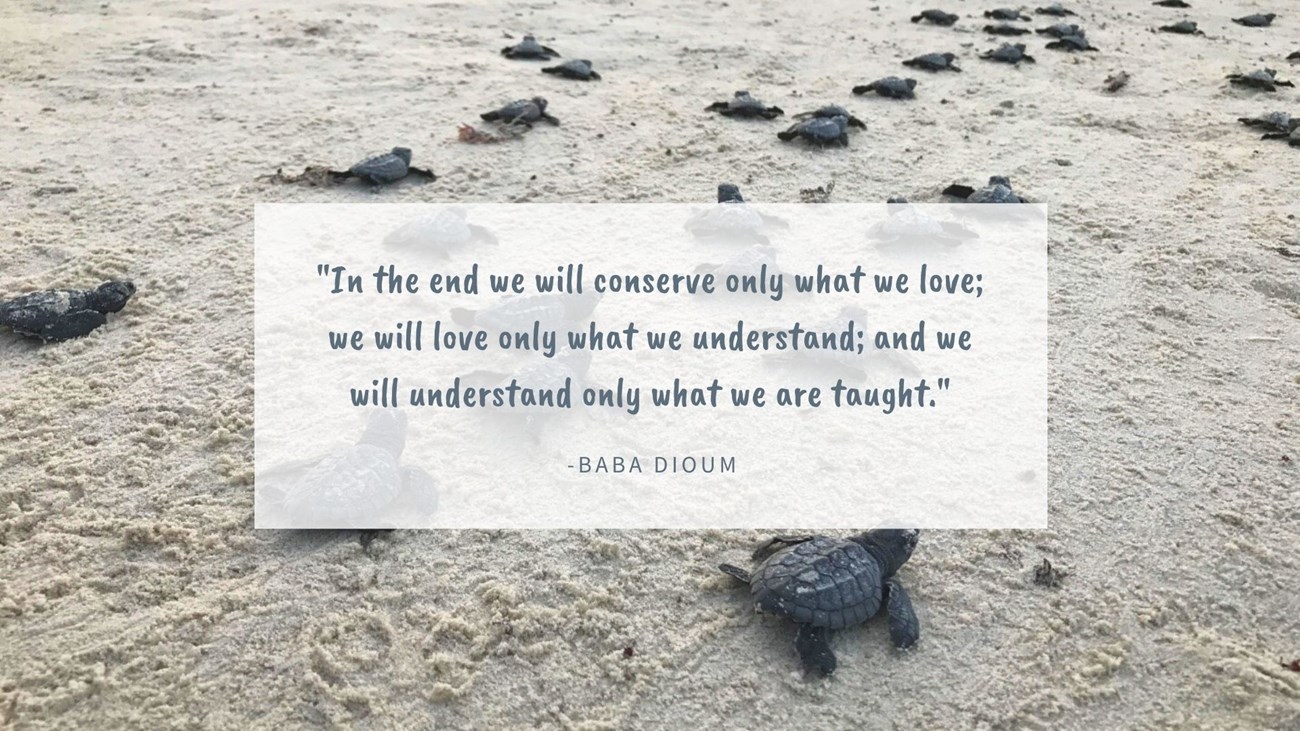
Learn more about Dr. Shaver and her research with sea turtles
Dr. Shaver Profile Page:
https://www.nps.gov/pais/learn/nature/shaver.htm
Sea Turtle Science Recovery Program Page:
https://www.nps.gov/pais/learn/nature/stsr.htm
Kemps’ Ridley Story Page:
https://www.nps.gov/pais/learn/nature/kempsridleystory.htm
Published Papers:
https://www.researchgate.net/profile/Donna_Shaver
- Duration:
- 49.583 seconds
This short video clip was developed to inspire people to visit Padre Island National Seashore to experience first-hand the Kemp's ridley project that the NPS started and proudly supported for many years. This video was produced by the Padre Island National Seashore Division of Sea Turtle Science and Recovery in 2016.
